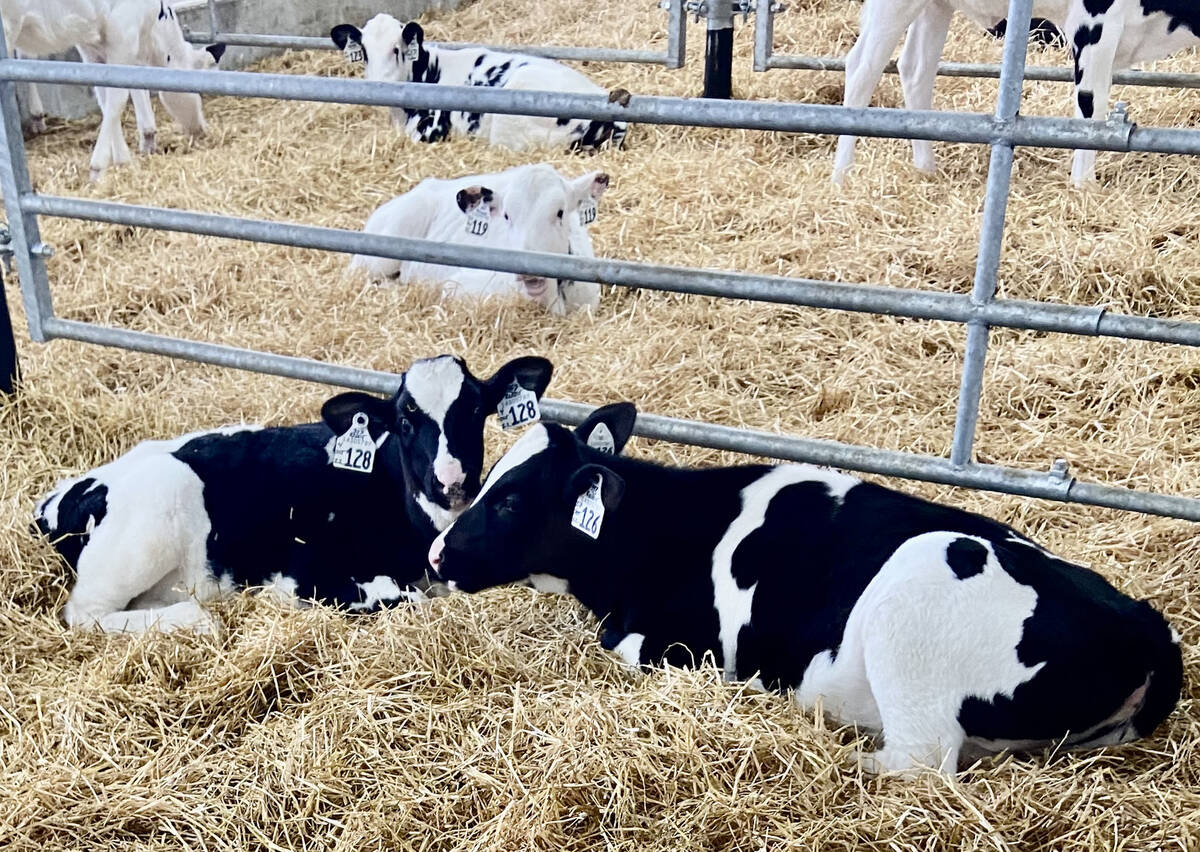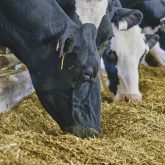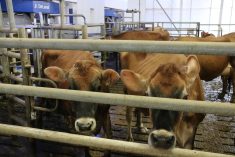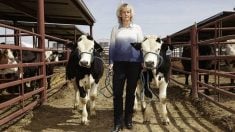Bovine viral diarrhea (BVD) infection is typically introduced to a herd with the arrival of a persistently infected (PI) animal—a bovine that appears normal but sheds large amounts of the BVD virus into the environment. Naïve cattle exposed directly to the virus through nose-to-nose contact or indirectly through contaminated materials become sick with a fever, depression, pneumonia and-or diarrhea, and have reproductive losses and a reduction in milk yield.
Why it matters: Bovine viral diarrhea (BVD) virus can lead to respiratory and reproductive disease, causing significant economic losses for producers.
Occasionally, a severe form of BVD will occur with higher mortality, but more often, animals will recover. However, when pregnant cattle between 40 to 120 days gestation are exposed to BVD virus, the fetus is not able to launch an immune response and these calves will accept the virus as part of itself. As a result, they are born as a persistently infected animal and begin shedding BVD virus after birth, and a cycle of infection is maintained in the herd.
Read Also

Back to the drawing board for sexed semen fertility ratings
Lactanet, the national genetic evaluation and dairy data provider, goes back to the drawing board with its sexed semen fertility rating index prototype.
Some European countries have BVD control or eradication programs, and there are herds, regions or even countries that are declared BVD-free. To maintain this status, ongoing monitoring of animals is required to ensure the virus has not been introduced. The effectiveness of a surveillance program and maintenance of BVD-free status relies on understanding risk factors for introduction or reintroduction into a herd.
A recent study published in the Journal of Dairy Science conducted a meta-analysis—a statistical analysis that combines the results of multiple scientific studies—to provide an overview of possible risk factors for the introduction of BVD infection in European cattle herds. The goal was to assess the importance of the most frequently studied risk factors so producers can prioritize actions to prevent the introduction of BVD.
The key benefit of a meta-analysis is researchers can aggregate data from many separate studies, leading to greater statistical power and a better understanding of the consistency of findings between studies. Researchers searched three scientific databases using the same search terms to identify research studies that met their inclusion criteria
Initially, 6,985 papers in five languages were identified. However, after removing papers that didn’t include full texts, studied BVD in other species, were outside of Europe or didn’t include all the appropriate data, only 18 remained. In cases where enough studies evaluated the same risk factor in a way that the data could be combined, it was included in the meta-analysis. These included risk factors associated with herd characteristics, cattle movement and neighbourhood risk.
When the data was pooled, European dairy herds had an increased risk of BVD compared with beef herds. Researchers believe this may be associated with more contact between cattle and people, and higher traffic on dairy farms compared with beef farms. BVD infection risk also increased with increasing herd size. This finding may be due to larger herds being more likely to purchase cattle and the associated risk of introducing a PI into the herd.
The meta-analysis identified herds that introduce new cattle from outside the herd as higher risk for BVD infection compared with herds that do not introduce cattle. However, not all purchased cattle pose the same risk, but risk likely increases with a higher number of cattle purchased and with purchases from a larger number of source herds.
Researchers also found there was greater risk of BVD infection for herds that participated in cattle shows compared with herds that did not. The possibility of encountering BVD-infected cattle at shows or during transport leads to a greater risk of infecting the herd upon return. Finally, where cattle have contact at pasture, either by sharing pasture or through over-the-fence contact, BVD risk was increased compared with herds not sharing pasture. The extent of this risk is likely influenced by cattle density and the prevalence of BVD in the area.
An insufficient number of studies reported reproductive risk factors in a way that could be combined for analysis. Similarly, the authors could not conduct meta-analysis on farm management, biosecurity variables or diagnostic testing since they were included in a low number of studies and were not reported in a way the data could be combined.
However, another meta-analysis published recently on production losses associated with BVD found vaccination and biosecurity reduced annual BVD production losses per animal. As an example, a farm practising the biosecurity measure of quarantining and testing a new animal before entering the herd is lower risk than a farm where a cow is immediately introduced to the herd.
Even though this meta-analysis focused on European cattle systems, the results can be generalized to areas outside Europe where similar cattle production systems are used. BVD is detected regularly on submissions to diagnostic labs in Canada, which means understanding the risk to avoid introduction to naïve herds is also relevant in Canada. There were no unexpected risk factors identified in the meta-analysis, but consensus between studies reinforces the importance of adopting practices that will reduce the risk of introducing BVD or another infectious disease and optimize BVD control programs.
-Andrea Bajus is a technology transfer specialist with the Ontario Ministry of Agriculture, Food and Agribusiness (OMAFA). This article was originally published at OMAFA’s Dairy and Beef Cattle Production website.














